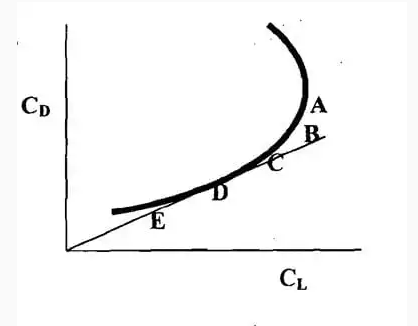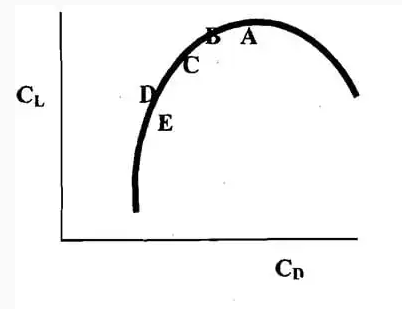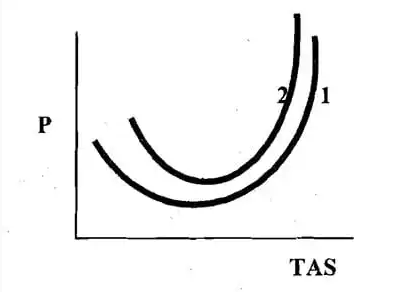Results
-
HD Quiz powered by harmonic design
#1. If VA at 60000 Kg is 250 Kts what will it be at 70000 Kg?
#2. If flaps up VA at 60000 Kg is 250 Kts what will it be at 70000 Kg with flaps down?
#3. If weight is increased by 25% by what % will VA increase?
#4. The positive limit load factor of a JAR certificated passenger aircraft is ......... flaps up and ....... flaps down?
#5. At VA?
#6. If load factor is increased beyond.. . . .. at maximum operating altitude it will cause.. .. . . . . . . . ?
#7. VA is?
#8. Which of the following would increase VA for a given aircraft structure?
#9. Which of the following would improve ride quality in turbulence?
#10. VA is?
#11. Deploying flaps in turbulence will?
#12. Aircraft manoeuvrability ........ at high altitude because ............?
#13. .............. aircraft are least affected by turbulence?
#14. The limiting load factor for a light utility aircraft in clean configuration is?
#15. A JAR certificated passenger aircraft must withstand ........p osilive loading without catastrophic failure?
#16. At low all-up mass the positive limit load factor?
#17. VA is?
#18. A sudden up gust will?
#19. A sudden up gust will?
#20. Increasing CL.. . . . . . . .load factor?
#21. Descending at constant mach number might cause?
#22. Climbing at constant IAS might cause?
#23. The left boundary of the V-n and gust envelopes is?
#24. The right boundary of the V-n and gust envelopes is?
#25. Exceeding maximum operating altitude is likely to cause?
#26. An excessive gust-induced load factor at Vc could be remedied by?
#27. The margin between Vc and VD must be?
#28. Minimum limiting load factor with flaps down is?
#29. Maximum limiting load factor required for JAR passenger aircraft certification is?
#30. Buffeting must not occur between .......... And ...........?
#31. Increasing flap setting from 10 degrees to 30 degrees will ... . . . V2min?
#32. At constant altitude the buffet boundaries will converge with?
#33. At constant altitude the buffet boundaries will converge with?
#34. Increasing IAS in a climb will . . . .. . . . . the altitude at which the mach limit is reached?
#35. When descending at constant IAS a headwind will?
#36. When descending at constant TAS a headwind will?
#37. If weight decreases when cruising at constant altitude and CL?
#38. VMCL will not be affected by .........?
#39. When descending at constant mach number below 35000 feet angle of attack must?
#40. When descending at constant IAS below 35000 feet angle of attach must?
#41. When descending at constant TAS below 35000 feet, angle of attack must?
#42. As altitude increases at constant weight and load factor, high speed buffet margin .......... and low speed buffet margin .......?
#43. When climbing at constant Mach number above the tropopause IAS will ..... and TAS will . . ... ?
#44. At the maximum operating altitude?
#45. At the aerodynamic ceiling?
#46. At the absolute ceiling?
#47. At VA?
#48. Vc is ......... than VB and, VB is ....... than VD?
#49. Vx is ......... than Vy and ........... than VMCG?
#50. VMCAis .........t han VR which is .............. than VMCG?
#51. The correct equation is?
#52. In a constant mach number climb in the troposphere true airspeed?
#53. In a constant mach number climb true airspeed?
#54. V2 is?
#55. At the intersections of the power available and power required curves?
#56. If fuel consumption is defined in Kg/nm?
#57. The minimum and maximum values of V1 are?
#58. In level flight?
#59. In a constant TAS climb in the troposphere?
#60. In a constant IAS climb in the troposphere?
#61. In a constant TAS climb?
#62. In a constant IAS climb in th.e troposphere?
#63. At low altitude?
#64. At high altitude?
#65. In a constant mach number descent there is a danger that?
#66. VR must be not less than ..... . for a Class a aircraft?
#67. Increasing aircraft mass by 10% ...... ?
#68. Decreasing aircraft mass by 26% ........ VMD by ...... % but ............?
#69. Flying at maximum range speed in a jet aircraft the angle of attack will be?
#70. Changing speed from VMP to VMD ?
#71. The correct sequence of velocities is?
#72. The relationship between Vx and Vy is?
#73. The correct sequence is?
#74. Climb gradient in still air is closest to?
#75. As altitude increases?
#76. If mach number and weight remain constant, increasing altitude requires?
#77. Vnlcc will be lowest with?
#78. What is indicated in the buffet boundary chart?
#79. When flying close to the maximum operating altitude?
#80. When flying close to the maximum operating altitude stability is?
#81. Flying at maximum range speed in a propeller driven aircraft the angle of attack will be?
#82. At what speed must a jet aircraft and a propeller aircraft fly to maintain altitude in straight and level flight at the absolute ceiling?
#83. What happens as a propeller aircraft climbs to its absolute ceiling?
#84. What happeiis to the CAS values of Vx and VMD as a propeller aircraft climbs to its absolute ceiling?
#85. Which of the following occur when a propeller aircraft is at its absolute ceiling?
#86. Climb gradient is closest to?
#87. Flying at maximum endurance speed in a propeller driven aircraft the angle of attack will be?
#88. Flying at maximum endurance speed in a jet aircraft the angle of attack will be?

#89. Point D on the diagram at the right might be?

#90. Point E on the diagram at the right might be?

#91. Point C on the diagram at the right might be?

#92. Point A on the diagram at the right might be?

#93. Point B on the diagram at the right might be .... if C is VYProp?

#94. Point B on the diagram at the right might be ... if C is Vmp?

#95. Point D on the diagram at the right might be?

#96. Point D on the diagram at the right might be?

#97. Point D,on the diagram at the right might be?

#98. Point D on the diagram at the right might be?

#99. Point B on the diagram at the right might be?

#100. What might have caused the change from curve 1 to 2 in the diagram at the right?

#101. What might have caused the change from curve 1 to 2 in the diagram at the right?

#102. What might have caused the change from curve 1 to 2 in the diagram at the right?

#103. What might have caused the change from curve 1 to 2 in the diagram at the right?



